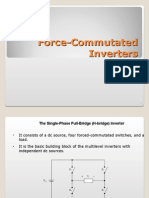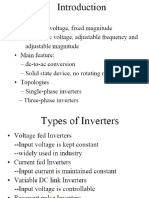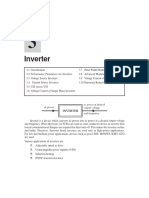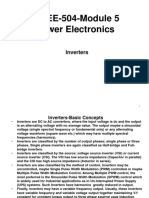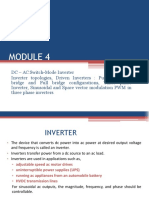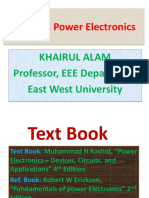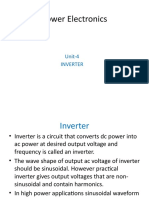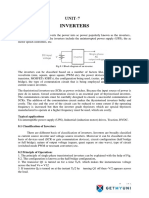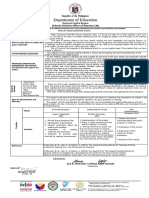0% found this document useful (0 votes)
6 views18 pagesPDC Unit 3
The document covers the principles and classifications of DC to AC converters, specifically focusing on single-phase and three-phase inverters using MOSFETs and IGBTs. It details the operation modes of half-bridge and full-bridge inverters for resistive and resistive-inductive loads, as well as the effects of harmonics and methods for their reduction. Additionally, it discusses PWM techniques for voltage control in inverters.
Uploaded by
vshakha08Copyright
© © All Rights Reserved
We take content rights seriously. If you suspect this is your content, claim it here.
Available Formats
Download as PDF, TXT or read online on Scribd
0% found this document useful (0 votes)
6 views18 pagesPDC Unit 3
The document covers the principles and classifications of DC to AC converters, specifically focusing on single-phase and three-phase inverters using MOSFETs and IGBTs. It details the operation modes of half-bridge and full-bridge inverters for resistive and resistive-inductive loads, as well as the effects of harmonics and methods for their reduction. Additionally, it discusses PWM techniques for voltage control in inverters.
Uploaded by
vshakha08Copyright
© © All Rights Reserved
We take content rights seriously. If you suspect this is your content, claim it here.
Available Formats
Download as PDF, TXT or read online on Scribd
/ 18





